Realizing the key role of R&D, our Party and State have recently set a target of resolutely increasing investment in R&D to 2% of GDP by 2030. This is not only a correct but also very accurate decision. However, in order for the increase in investment to be effective, the first urgent thing is to remove the "barriers" to pave the way for Vietnamese R&D to accelerate and catch up with the world.
Removing financial barriers, 'giving strength' to scientists
Strong reforms are needed so that the financial mechanism is no longer a "horror" but becomes a "source of energy" for scientists, freeing scientists from administrative burdens to focus on knowledge creation, contributing to bringing Vietnamese R&D out of stagnation and growing strongly.
Strong reforms are needed so that the financial mechanism is no longer a "horror" but becomes a "source of support" for scientists, freeing scientists from administrative burdens. Illustration photo, photo: vneconomy
The current financial mechanism in managing S&T tasks is outdated, complicated and inflexible. Instead of being supportive, this mechanism is becoming an administrative burden for scientists, causing unnecessary waste of time and effort, reducing the effectiveness of research tasks, making scientists unable to fully devote themselves to research. A 300-page project description, more than 2/3 of which is the financial description, requires a detailed listing of each expense category, specific unit prices - including small supplies such as chemical scales, with fixed prices approved in advance.
The complicated and procedural payment process forces many project managers to "change" it to suit the requirements of expenditure approval. However, this "change" can be misunderstood or exploited, posing potential risks during the later inspection and audit process. In reality, the construction and completion of financial records and payment settlement are a nightmare for science and technology staff, making many people afraid to participate in leading science and technology tasks.
To untie this knot, it is necessary to redesign the financial mechanism for R&D in the direction of giving real financial autonomy to the subjects in the system. Shift from short-term funding to medium- and long-term funding, ensuring stability and creating conditions for research tasks to be implemented continuously, in depth and sustainably.
Simplify and standardize disbursement procedures, moving towards a “post-audit” model as many advanced countries are applying, instead of the current rigid “pre-audit” model. Learn from successful countries such as the National Research Foundation model of Korea, or the ERC Fund of Europe to build a financial system that is both transparent and creates maximum favorable conditions for innovation.
To make businesses become “key players” in the R&D ecosystem
The weak role of enterprises in the national R&D system is a major “barrier” that needs to be overcome immediately. Because only when enterprises, especially private enterprises, become the “main players” in the national R&D system, can Vietnam have a dynamic, vital, endogenously motivated innovation system that can keep up with the world’s development trends.
Currently, Vietnamese enterprises invest very little in R&D, on average spending only about 1.6% of annual revenue on R&D activities, much lower even when compared to countries in the region, such as the Philippines with 3.6%, Malaysia with 2.6%... R&D activities in enterprises are insignificant, except for a few large enterprises or newly emerging information technology enterprises in recent times.
Vietnamese enterprises also have few links with research institutes and universities. These links are still loose and ineffective.
The incentive and promotion policy mechanism is not "close enough", not attractive enough, often only exists on paper and if implemented, the procedures are cumbersome and complicated.
The financial mechanism and investment process for R&D are complicated, risky and unattractive to businesses. The current legal system has not created strong enough incentive policies, nor does it have a flexible and transparent legal environment to encourage private businesses to invest long-term in R&D.
As a result, even with businesses that have financial potential and a need for technological innovation, they are still hesitant or even “avoid” carrying out domestic R&D activities, instead they seek to buy technology from abroad.
To promote enterprises to play a central role, leading the R&D ecosystem, first of all, there needs to be specific policies, going into depth, targeting the "barriers" of each enterprise in R&D activities. Specifically:
Firstly, it is necessary to select and strategically support a number of 'technology eagles' with the capacity and potential to reach out globally to take on the leading role, leading the national innovation ecosystem. Special support policies such as: tax incentives, direct financial support for high-tech projects, easing barriers in regulations and procedures, support for high-quality human resources, etc.
Second, restructure the state-owned enterprise (SOE) sector towards streamlining, efficiency and innovation. Merge SOEs in the same industry and field to form large-scale corporations with financial potential, human resources and modern infrastructure capable of investing systematically in R&D development and application of advanced technology. At the same time, SOEs need to be placed in a fair competitive environment with the private sector, subject to pressure on business efficiency and innovation like any other enterprise.
Third , build strong tax incentive mechanisms for investments in R&D, including both basic and applied research costs. Preferential credit policies, loan guarantees, co-financing funds from the State for R&D projects, etc.
Furthermore, policies must be clear, consistent and easy to implement in practice; overly complex policies make it difficult for small and medium-sized enterprises to understand, let alone apply them.
Developing strong research universities, connecting global intelligence
R&D activities in the university sector are currently mainly supplementary to training activities, aiming at international publications to improve the school's ranking in international rankings to attract students instead of focusing on actual production and serving society. It must also be said that with a modest level of investment in R&D, it is impossible to have valuable projects comparable to those of developed countries.
Furthermore, due to the inadequacy of policies on training and using highly qualified human resources, the university sector in Vietnam has lost an important foundation in training a workforce of capable researchers like those in developed countries. In many developed countries, doctoral students or post-doctoral interns are not only exempted from tuition fees but also paid through participation in research projects. This “learning by doing” model not only helps to take advantage of young, ambitious human resources, but also creates a superior training environment, where doctoral students are directly led by leading scientists.
In contrast, in Vietnam, PhD students not only do not receive financial support, but also have to pay their own tuition fees with very few opportunities to participate in substantive research projects. As a result, the training process is formal, fragmented, lacking depth and of low quality. Furthermore, Vietnam currently does not have a post-doctoral training mechanism, a key stage in the chain of training high-quality S&T human resources in developed countries. The post-doctoral stage allows young PhDs to accumulate practical experience in a professional research environment, before becoming independent researchers.
It is necessary to restructure the university education system in the direction of closely linking teaching - research - practical application. Universities need to reposition themselves from chasing the number of scientific publications on paper to providing knowledge and practical solutions for businesses and society.
Lecturers not only impart knowledge and produce knowledge, but also directly participate in solving economic and social problems, thereby becoming a living example for learners. Each university is not only a "school" but also a "school of life", where students can experience reality, develop thinking, adaptability and creativity - skills that cannot be acquired through books alone.
It is necessary to focus investment on developing a number of strong research universities that connect global intelligence, are the cradle of new knowledge, and are the source of breakthrough technologies and initiatives with national and international influence.
Restructuring public R&D towards leanness and efficiency
Public research institutes have a large research staff, but R&D activities here are weak and fragmented. Investment budgets are modest, organizational and management skills are limited, but we have organized a cumbersome public R&D system with too many focal points.
After many arrangements, the public R&D system still has many focal points. Preliminarily, we have nearly 500 central-level R&D organizations and about 170 organizations under the management authority of provincial People's Committees.
It is necessary to restructure the public R&D system in the direction of minimizing the number of focal points, merging public research institutes to form large-scale research institutes to have enough resources and capacity to conduct large-scale and valuable research and projects. Ideally, all current public research institutes, most of which are weak with less than 100 institutes, should be merged, merging 170 science and technology organizations under the management of provincial People's Committees into 2 academies...
In short, along with rapidly increasing investment in R&D development, Vietnam needs to take strategic steps to remove “barriers”, create strong enough motivation, large enough development momentum and wide enough space to pave the way for R&D to accelerate and catch up with the world. Whether we focus strongly on accelerating R&D development today or not will shape Vietnam’s position in the coming decades.
Source: https://vietnamnet.vn/thao-bung-rao-can-de-nghien-cuu-va-phat-trien-viet-nam-but-toc-2395780.html


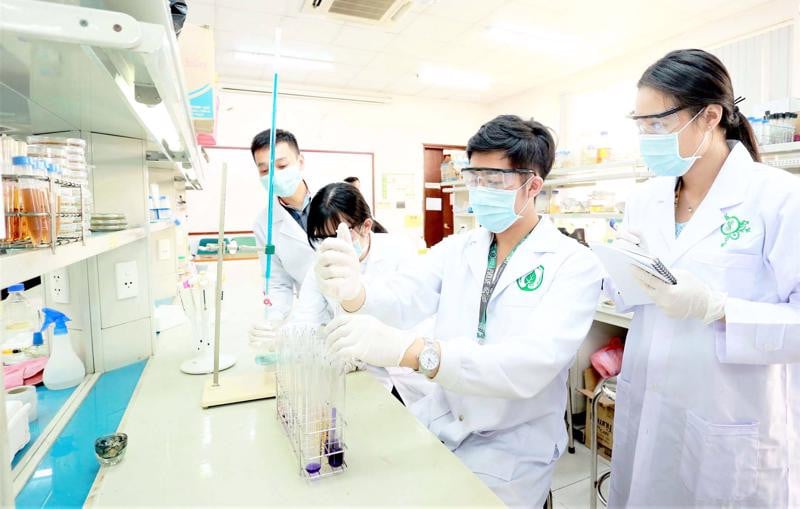


![[Photo] General Secretary To Lam receives Sri Lankan President Anura Kumara Dissanayaka](https://vphoto.vietnam.vn/thumb/1200x675/vietnam/resource/IMAGE/2025/5/4/75feee4ea0c14825819a8b7ad25518d8)

![[Photo] Bus station begins to get crowded welcoming people returning to the capital after 5 days of holiday](https://vphoto.vietnam.vn/thumb/1200x675/vietnam/resource/IMAGE/2025/5/4/c3b37b336a0a450a983a0b09188c2fe6)
![[Photo] Vietnam shines at Paris International Fair 2025 with cultural and culinary colors](https://vphoto.vietnam.vn/thumb/1200x675/vietnam/resource/IMAGE/2025/5/4/74b16c2a197a42eb97597414009d4eb8)



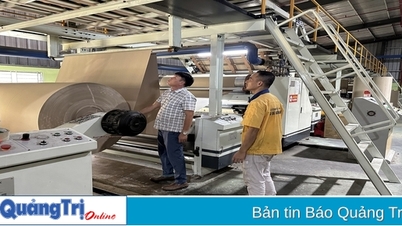


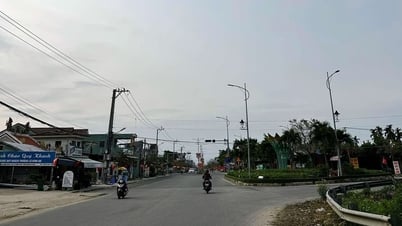











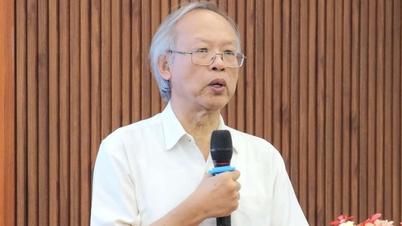


















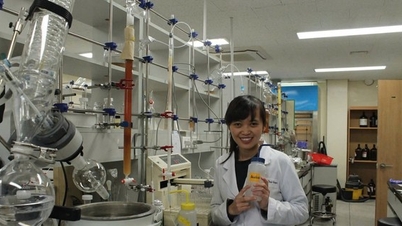







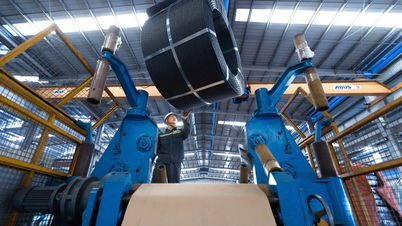
























![[Podcast]. Feelings about my hometown](https://vphoto.vietnam.vn/thumb/402x226/vietnam/resource/IMAGE/2025/5/4/3162d84d29ad476c9306740de7a4bee3)








![[Video]. Building OCOP products based on local strengths](https://vphoto.vietnam.vn/thumb/402x226/vietnam/resource/IMAGE/2025/5/3/61677e8b3a364110b271e7b15ed91b3f)



Comment (0)